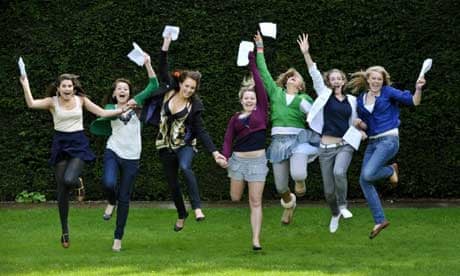Labour's multi-billion investment in education has produced an average increase of just one GCSE at grade C per pupil every five years, statisticians revealed today.
The Office for National Statistics (ONS) analysed whether schools and colleges had provided value for money – or "productivity" – between 1996 and 2008.
They found that overall value for money was the same in 2008 as it was in 1996. Between 1996 and 2000, productivity grew by 8.1%, but between 2000 and 2005 it fell by 6.8%. It has been flat since then.
Education quality, which the statisticians measure by improvements to average GCSE grades, rose between 1996 and 2008, but only by an annual 2.5%. This is the equivalent of an extra GCSE at grade C every five years.
The statisticians calculate productivity by dividing education "outputs", such as the number of pupils and their grades, by "inputs" funded by the public purse, such as the number of teachers and textbooks.
Productivity hardly changed because while school attendance, the number of students in further education and GCSE grades rose, there were fewer pupils, more publicly-funded nursery places and more teaching assistants, the ONS said.
Richard Wild, one of the statisticians, said he recognised that there could be a time lag when it came to seeing the benefits from investment in education.
But schools minister Vernon Coaker condemned the report as having "far too narrow a view of the education system in England". Coaker said: "Parents will appreciate that there is far more to a school and to a child's time at school than productivity.
"The report doesn't take into account the wider outcomes for children, such as the universal childcare offered for all three- and four-year-olds or the hard work of teachers to narrow the achievement gap for disadvantaged pupils.
"If productivity was the main goal, then we could simply double class sizes to double the amount of teaching done by one person, but clearly that would have a devastating impact on education. What is important is raising standards across the board – and that is what we are achieving.
"Even by the authors own methodology, the investment the government has made has increased the quality of education by almost 40% since 1996, which is a picture that would be recognised by parents and teachers across the country."
The shadow schools minister, Nick Gibb, said: "These figures confirm that the government has failed to deliver value for money. Productivity has fallen since 2000 because higher spending hasn't been matched by necessary reform. Productivity would be even worse if the figures reflected the drift away from core academic subjects over the last few years. We would implement reforms which would see professionals trusted, bureaucracy slashed and parents empowered."
The ONS analysis comes as government data shows that more than a quarter of England's population is currently in education or training.
The credit crunch is thought to have encouraged many people to return to studying. For every two people in work, there is now more than one person in education, the figures from the Department for Children, Schools and Families reveal.
Some 14.5m children and adults are studying, 8.1m of them at school or nursery, the data shows.
